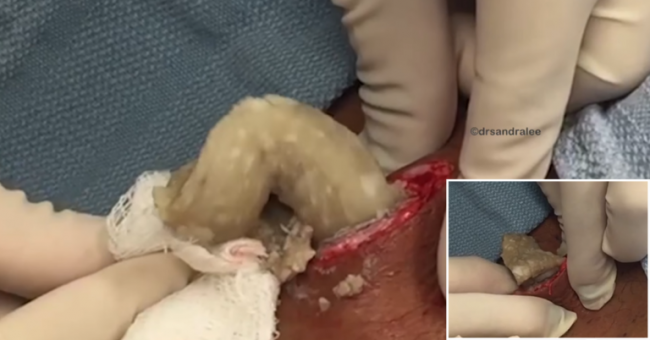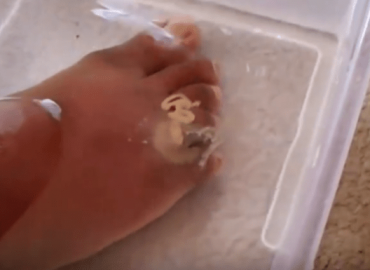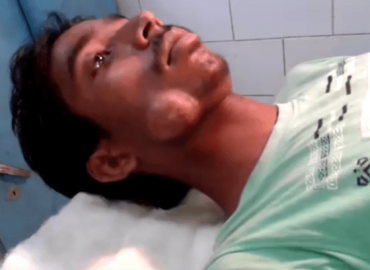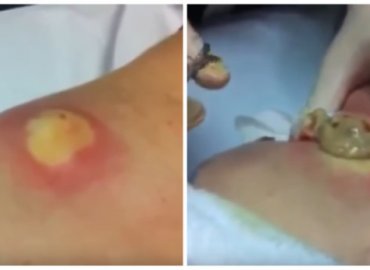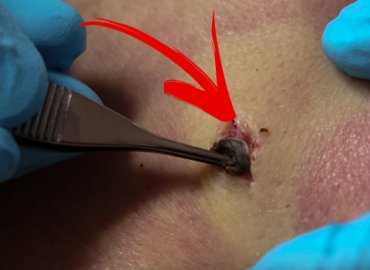An epidermoid cyst (Epidermal Inclusion cyst, Infundibular cyst), is a benign growth commonly found in the skin and typically appears on the face, neck or trunk, but can occur anywhere on the body. Another name used is “sebacous cyst” but this is actually an antiquated misnomer, and is not a term used by dermatologists. They are also the most common type of cutaneous cysts.
Epidermoid cysts result from the reproduction of epidermal cells within a confined space of the dermis. The pasty contents are mostly composed of macerated keratin (wet skin cells), which creates this “cheesy” consistency, and there can be a pungent odor. An epidermoid cyst may have no symptoms and are typically harmless. Usually people seek removal but they don’t like the appearance of these bumps, or the cyst has ruptured or been inflamed or “infected” in the past. Rupture is associated with sudden redness, pan, swelling, and local heat, and can lead to abscess formation.
Also, a history of inflammation, often increases scar tissue in the area, makes the cyst more firmly adherent to surrounding skin, and makes it more difficult to remove. Surgical excision is curative, but the complete cyst removal including the entire cyst sac and contents need to be removed to ensure that the cyst won’t reoccur.
It is rarely a good idea to pop pimples, since doing so can cause scars or worsen your breakout. If you must pop a pimple, the best way to prevent damage is to use a needle. Alternatively, applying a wet rag can gently remove a whitehead. Using your hands to squeeze the pimple is not recommended, but can be done if the other methods seem too labor-intensive.
Determining Whether a Pimple Can Be Popped
Pop whitehead pimples. Whitehead pimples have usually been around for a few days, and they have a white tip where pus has collected underneath the skin. These pimples are easy to pop, and when treated with care they can be safely removed without spreading the infection or causing scarring.
Don’t pop new pimples. Pimples that have just appeared in the past day or two aren’t ready to pop yet. Wait until the whitehead appears at the tip of the blemish.
Don’t pop pimples that are big, red, or sore. This could worsen your pimple by sending bacteria deeper into your skin. Popping a pimple this big will almost definitely lead to a scar. Only a pimple with white pus is ready to pop.
Visit a dermatologist. Dermatologists can determine the best way to treat your acne. They can prescribe creams that will eliminate your pimples. There are also several procedures they can perform that can treat severe breakouts.
The most commonly prescribed dermatologist treatment is a topical cream, rubbed on the pimples, that will remove oil from the skin and kill acne-causing bacteria.
For red, swollen pimples an oral antibiotic, hormonal birth control, or isotretinoin might be prescribed.
Large acne cysts can be removed by dermatologists through drainage and extraction, in which they remove the cyst and drain out the pus.
Your dermatologist can safely lance the pimple with a pin. This is a technique that should only be done by professionals.
Laser therapies and chemical peels can treat the underlying causes of acne, although they will not remove current cysts.
Limit pimples by washing regularly. Pimples are caused by sweat sitting on your face. Anytime you sweat, wash your face gently with lukewarm water to remove dirt and grime. Do not be harsh or scrub, just wash off sweat.
Scrubbing roughly can worsen acne.
Do not use rough cleaners, like astringents, toners, or exfoliants.

